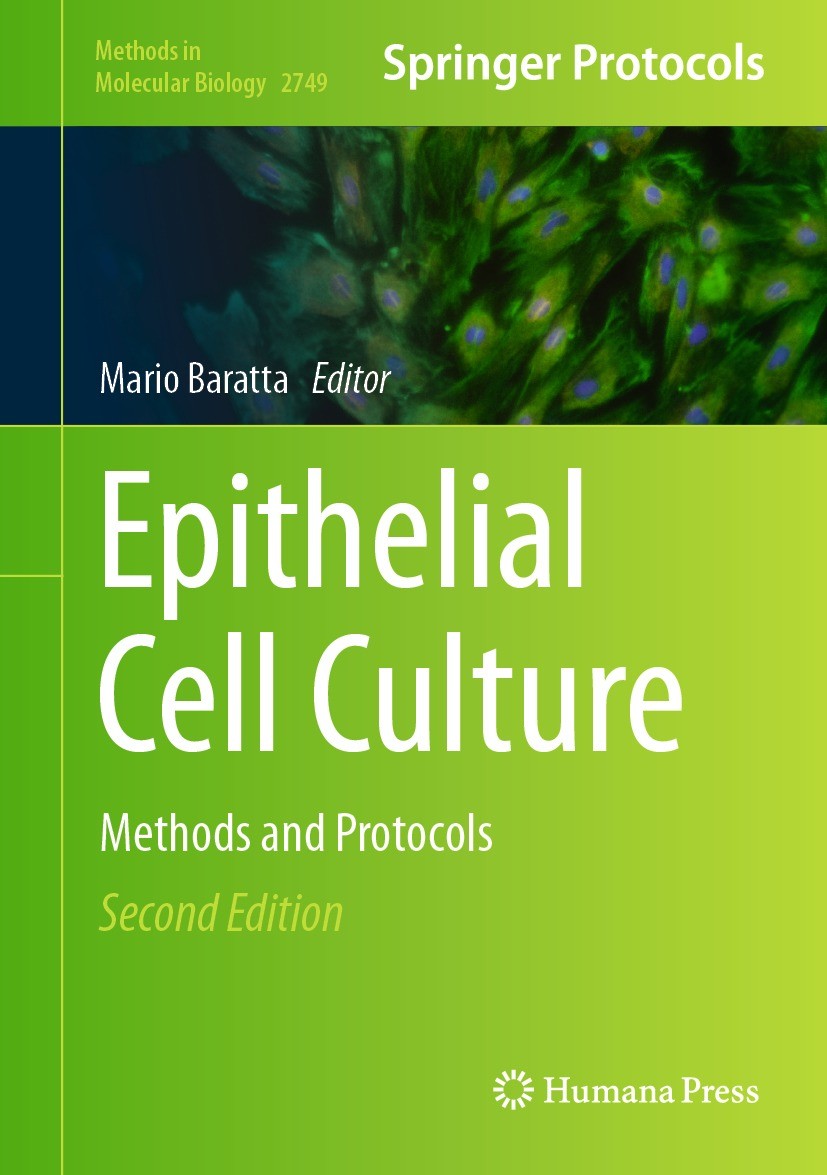| 书目名称 | Epithelial Cell Culture | | 副标题 | Methods and Protocol | | 编辑 | Mario Baratta | | 视频video | http://file.papertrans.cn/314/313372/313372.mp4 | | 概述 | Includes cutting-edge methods and protocols.Provides step-by-step detail essential for reproducible results.Contains key notes and implementation advice from the experts | | 丛书名称 | Methods in Molecular Biology | | 图书封面 |  | | 描述 | .Back Cover Copy..This second edition volume expands on the previous edition with in-depth discussions on the rapid advancements in epithelial cell biology, and the cutting-edge research and techniques used by researchers in the field. The chapters in this book cover topics such as detailed methodologies applicable to epithelial cells derived from primates, pigs, bovines, and laboratory animals; the manipulation and differentiation of epithelial cells; and epithelial cell models in the gastroenteric system in human medicine and nutrition. Written in the highly successful .Methods in Molecular Biology. .series format, chapters include introductions to their respective topics, lists of the necessary materials and reagents, step-by-step, readily reproducible laboratory protocols, and tips on troubleshooting and avoiding known pitfalls..Comprehensive and cutting-edge, .Epithelial Cell Culture: Methods and Protocols, Second Edition. .is a valuable resource for researchers in the scientific community, educators,and students who are interested in unraveling the complexities of epithelial cell biology, cultivating curiosity, and inspiring the next generation of groundbreaking research... . | | 出版日期 | Book 2024Latest edition | | 关键词 | gastrointestinal stem cells; intestinal organoids; Tumor Microenvironment; drug permeability; Zebrafish | | 版次 | 2 | | doi | https://doi.org/10.1007/978-1-0716-3609-1 | | isbn_softcover | 978-1-0716-3611-4 | | isbn_ebook | 978-1-0716-3609-1Series ISSN 1064-3745 Series E-ISSN 1940-6029 | | issn_series | 1064-3745 | | copyright | The Editor(s) (if applicable) and The Author(s), under exclusive license to Springer Science+Busines |
The information of publication is updating

|
|
 |Archiver|手机版|小黑屋|
派博传思国际
( 京公网安备110108008328)
GMT+8, 2025-12-25 03:20
|Archiver|手机版|小黑屋|
派博传思国际
( 京公网安备110108008328)
GMT+8, 2025-12-25 03:20


